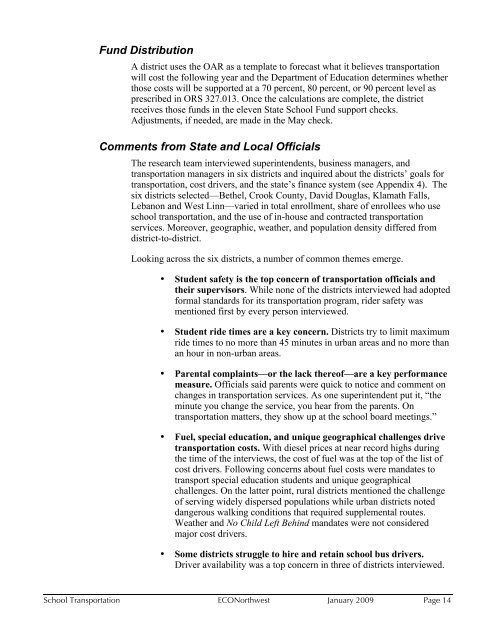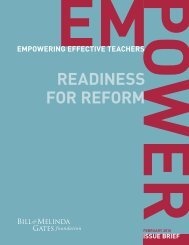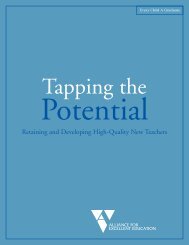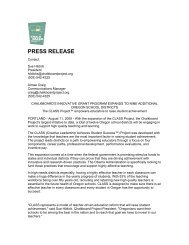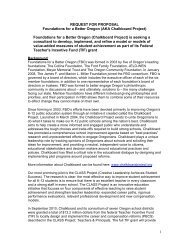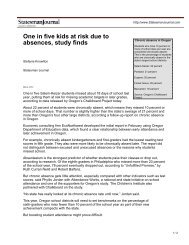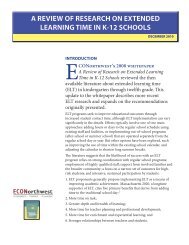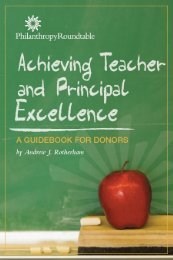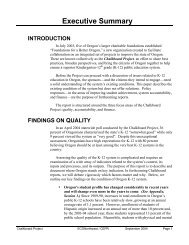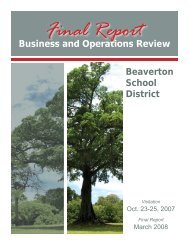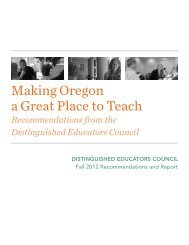Oregon Public School Transportation Funding - The Chalkboard ...
Oregon Public School Transportation Funding - The Chalkboard ...
Oregon Public School Transportation Funding - The Chalkboard ...
You also want an ePaper? Increase the reach of your titles
YUMPU automatically turns print PDFs into web optimized ePapers that Google loves.
Fund Distribution<br />
A district uses the OAR as a template to forecast what it believes transportation<br />
will cost the following year and the Department of Education determines whether<br />
those costs will be supported at a 70 percent, 80 percent, or 90 percent level as<br />
prescribed in ORS 327.013. Once the calculations are complete, the district<br />
receives those funds in the eleven State <strong>School</strong> Fund support checks.<br />
Adjustments, if needed, are made in the May check.<br />
Comments from State and Local Officials<br />
<strong>The</strong> research team interviewed superintendents, business managers, and<br />
transportation managers in six districts and inquired about the districts’ goals for<br />
transportation, cost drivers, and the state’s finance system (see Appendix 4). <strong>The</strong><br />
six districts selected—Bethel, Crook County, David Douglas, Klamath Falls,<br />
Lebanon and West Linn—varied in total enrollment, share of enrollees who use<br />
school transportation, and the use of in-house and contracted transportation<br />
services. Moreover, geographic, weather, and population density differed from<br />
district-to-district.<br />
Looking across the six districts, a number of common themes emerge.<br />
• Student safety is the top concern of transportation officials and<br />
their supervisors. While none of the districts interviewed had adopted<br />
formal standards for its transportation program, rider safety was<br />
mentioned first by every person interviewed.<br />
• Student ride times are a key concern. Districts try to limit maximum<br />
ride times to no more than 45 minutes in urban areas and no more than<br />
an hour in non-urban areas.<br />
• Parental complaints—or the lack thereof—are a key performance<br />
measure. Officials said parents were quick to notice and comment on<br />
changes in transportation services. As one superintendent put it, “the<br />
minute you change the service, you hear from the parents. On<br />
transportation matters, they show up at the school board meetings.”<br />
• Fuel, special education, and unique geographical challenges drive<br />
transportation costs. With diesel prices at near record highs during<br />
the time of the interviews, the cost of fuel was at the top of the list of<br />
cost drivers. Following concerns about fuel costs were mandates to<br />
transport special education students and unique geographical<br />
challenges. On the latter point, rural districts mentioned the challenge<br />
of serving widely dispersed populations while urban districts noted<br />
dangerous walking conditions that required supplemental routes.<br />
Weather and No Child Left Behind mandates were not considered<br />
major cost drivers.<br />
• Some districts struggle to hire and retain school bus drivers.<br />
Driver availability was a top concern in three of districts interviewed.<br />
<strong>School</strong> <strong>Transportation</strong> ECONorthwest January 2009 Page 14


